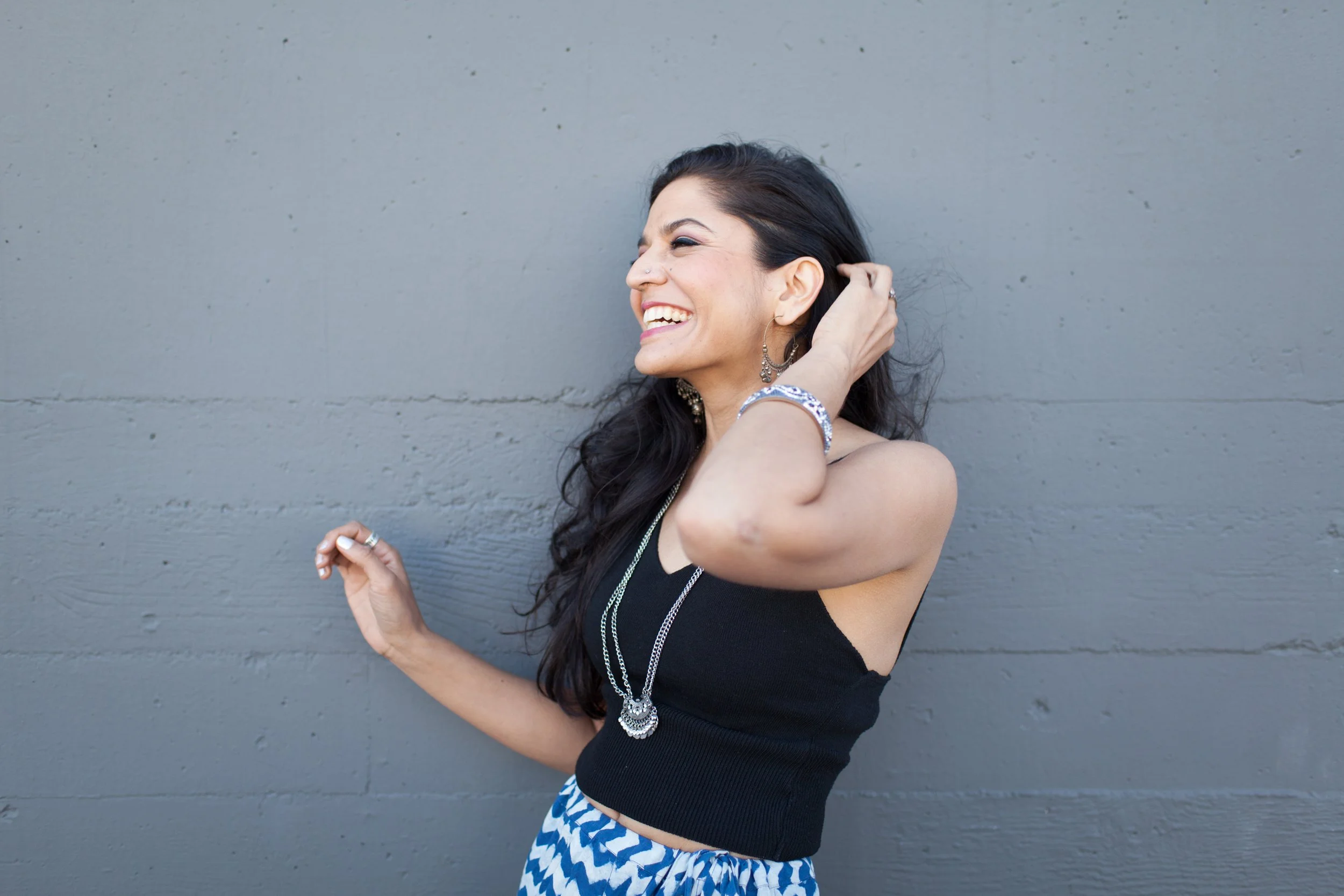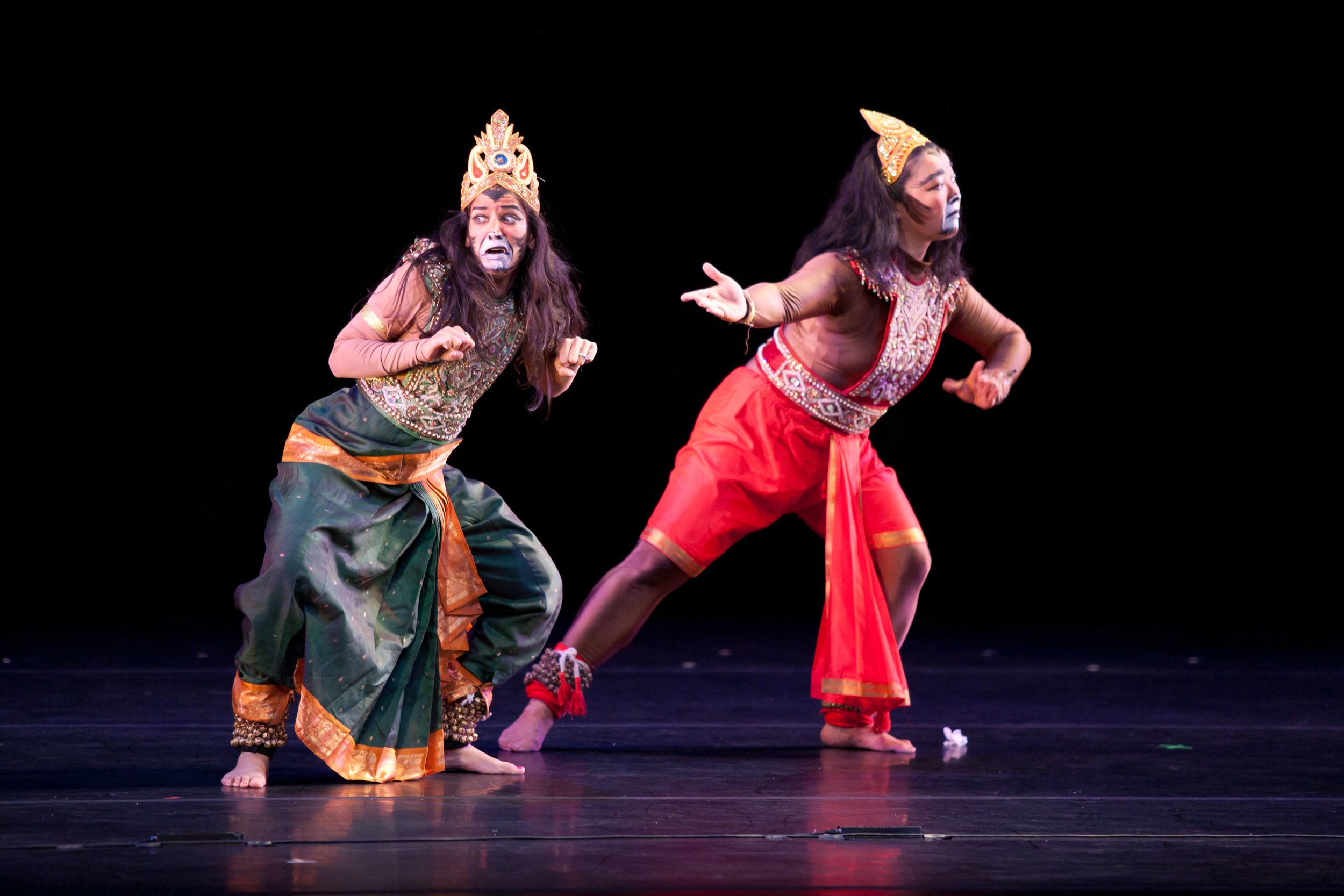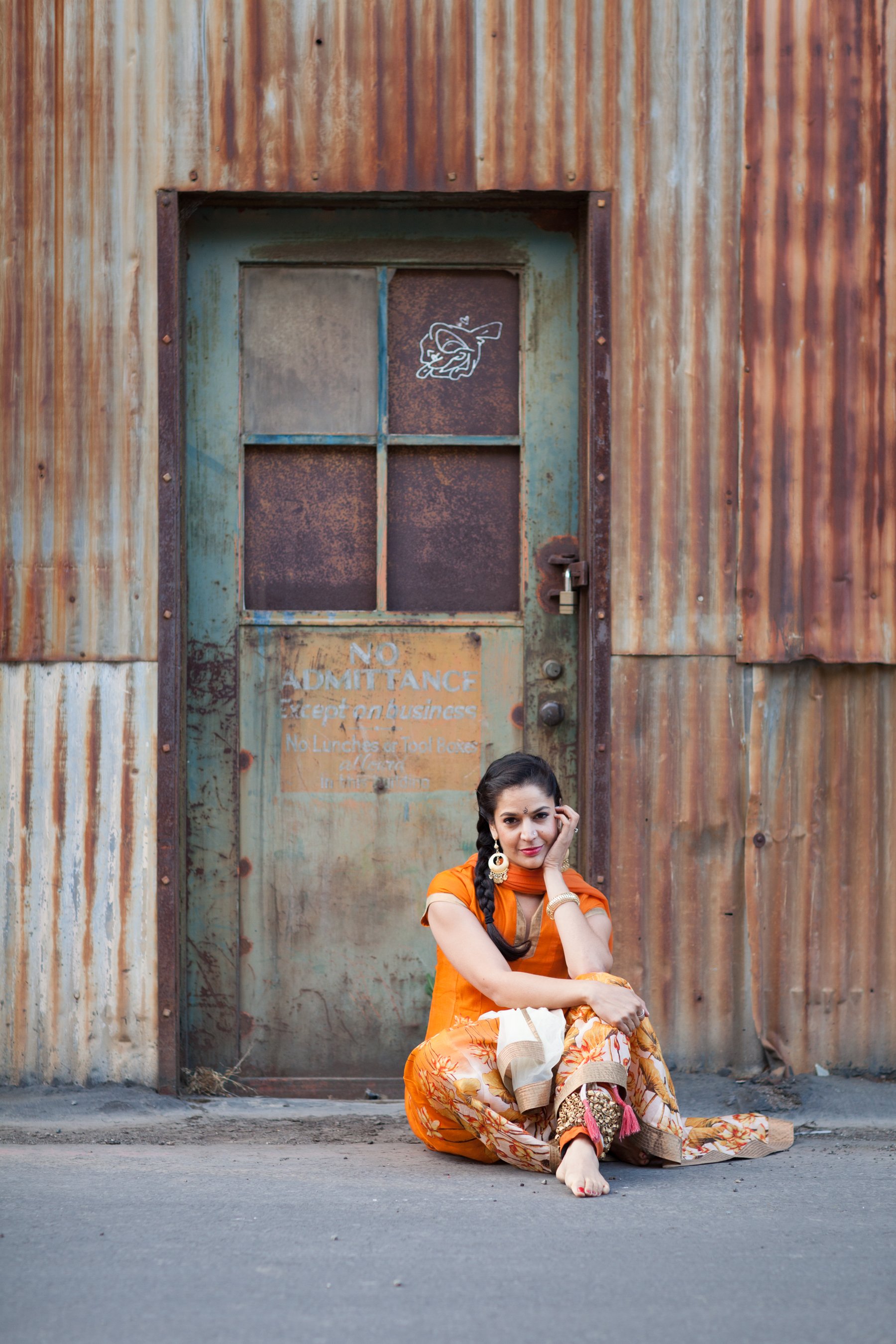
My Story
I am a first generation American-born Indian. I hail from a line of activists with both my maternal and paternal grandparents being deeply involved in many social and political issues of a pre-independence India. My paternal grandfather left his business to join full-time the ‘Quit India” movement led by Gandhi in the 1920s, demanding an end to British rule. He even spent jail time for his civil disobedience work. My paternal grandmother refused to pay a dowry or wear a veil at her wedding, and unapologetically wrote her own vows - all bold actions of female defiance in a a starkly patriarchal society. My maternal grandparents, both highly educated, together fought on the front lines for Dalit rights and women’s literacy. My grandmother secretly tutored Dalit women in her village and my grandfather worked to build wells for Dalit water freedom, even while receiving death threats from higher caste community members. Though much of this happened prior to me even being born, there is no doubt in my mind of the generational responsibility for resistance that was passed down to me in my blood.
My father (Yogesh Nivas) immigrated to the United States in 1967 as part of the first wave of immigration from India due to the Immigration and Nationality Act of 1965 - passed by President Lyndon Johson in large part from the pressures of the Civil Rights movement - ending discrimination and quota systems for U.S. immigration from non-European countries. After my father finished his graduate degree at UC Berkeley in Material Science, he married and brought my mother (Bina Nivas) to the U.S. while she was working towards a PhD in Physics in 1972. They both went on to have careers as scientists and engineers while I grew up well on the path to follow in their footsteps - until one foggy day in San Francisco I stepped into Pandit Chitresh Das’ class.
My Family History
“There is no doubt in my mind of the generational responsibility for resistance that was passed down to me in my blood.“
It was 1998 and I was a student at UC Berkeley studying Molecular Environmental Biology with a minor in South Asian studies. Just to paint the scene of that time – the internet or as we called it “the information superhighway”, was just on the brink of transforming the world (unbeknownst to us). “Dot com” companies were emerging, but the vast majority of people did not use the internet outside of email and we certainly didn’t have cell phones or even laptops. Technology was not mobile in any way so when we left the house we were focused on absorbing the sensory world around us. The UC Berkeley campus was as socially charged as ever and not a day went by that I wasn’t in awe of being immersed in this global think tank for science and the searing social issues of the time. I was a spirited 1st generation-born South Asian American and very active in our South Asian community and activities on campus, like the Indus club. We put on sold-out shows of 4000 people every year with a line-up of folk and classical dances (there was really no such thing as Bollywood dance yet), hip hop offerings (it was the 90s golden era of hip hop/R&B), and elaborate comedy bits riddled with inside jokes that only children of South Asian immigrants could collude on. We were young, brown, and proud. And it was the most formidable time of my life. The only problem was that while my South Asian pride was well-intentioned and pure-hearted, I didn’t have any real depth of knowledge about this culture that I claimed to be so proud of. I was naive, sophomoric – arrogant even. I thought that participating in culture shows, eating Indian food, and wearing Indian clothes made me a worthy ambassador for my heritage.
How I Discovered Kathak
“As I sat there, every part of my body was shaking. I had no idea that Indian dance could be this physical, emotional, and spiritual all at the same time. It was an India I never knew. It was a human experience I never knew.”
I loved dance (bhangra was my favorite at the time), so when I heard about kathak classes by this great master, I was intrigued. I was at the age where the world was a candy store. I was constantly searching for a purpose but still hadn’t found it. When I casually arrived just across the Bay Bridge in San Francisco to an ashram called the Cultural Integration Fellowship, before even walking into the class I could hear sounds of ghungroo vibrating the whole building. That in and of itself was a visceral energy that hit me. When I walked in, there were several women dripping in sweat in their salwar kurthas, not looking left and not looking right. The potential energy in the room that was generated from their focus was palpable. They were doing things with their feet and bodies that I had never seen in my life. And at the front of the room was this little firey man – he was yelling “Do or Die!”. My jaw dropped. I didn’t understand what was happening. This is an Indian dance class? I had seen Indian classical dance, but this level of intensity and focus was otherworldly. I sat and watched him teach the entire class – it was unrelenting, uncompromising, and provocative. He was purposefully trying to ignite a fire under his students. At times he would get up and make goading statements, holding a mirror up to each student and blowing up their programmed thinking about the world. As I sat there, every part of my body was shaking. I had no idea that Indian dance could be this physical, emotional, and spiritual all at the same time. It was an India I never knew. It was a human experience I never knew. And I had never seen a teacher who gave every drop of his soul to his students in every moment that he was teaching. At some point, Pandit Das finally looked at me and smirked his first words to me, “Who are you?”. Of course he partially wanted to know literally who I was and what I was doing there, but his question was also laced with a deep weight. It was more of a challenge, “Who are you? Why were you born? Do you even know?”
I didn’t know. But I was determined to find out.
Why I Kept Pursuing It
What initially drew me into the dance and made me keep coming back for more was the life philosophy with which Guruji made the dance a platform for. I was struck by the deep intention we were expected to have in each moment, beginning with how we walked into the classroom, how we conducted ourselves, and what level of consciousness we had at all times. He reminded us regularly of his own Guruji’s famous words, “I care more about how you walk into the classroom than how you dance.” It was always about what attitude and open-heartedness we brought into the room and how that should be translated to the way we lived outside the classroom. I was mesmerized in my early days of study just by the pranam (opening invocation) that we do at the start of every class. It’s such a deep level of intention, humility, and mindfulness combined with movement, melody, and beauty. Those four cycles of 16 beats perfectly enwraps the idea that we are not there to just learn dance pieces or execute choreography, but rather to wholly offer ourselves to the pursuit of a higher consciousness, a higher self, and a higher truth of who we each are as individuals in this world.
It’s this concept and the way in which Guruji extracted it from his students that continued to draw me in. Because let’s also be clear, it wasn’t about finding a higher consciousness through being New Agey and gentle and sensitive. Rather it was old-school, tough love with an aim to make us warriors. And he was okay with his methods weeding out those who couldn’t handle the heat. He always said “I don’t give sugar coated pills”. He was actually looking for students who responded to the heat with determination and perseverance – even if it meant taking short-term losses. Another line of his was “When you tell the truth, you will lose students, but you will gain disciples.” Lucky for me, I was searching for someone to tell me the truth, not just make me feel good in the moment.
And he utilized every aspect of the dance form to do this – its intense physical demands, powerful musicality, emotional breadth of storytelling, spontaneity of improvisation, its playfulness and sensuality, and of course the sheer beauty. All of them were tools to go deep into the crevices of the human experience, particularly what was uncomfortable. And when we were drenched in sweat, could barely breathe, and were too exhausted to tell the difference between our tears and sweat, he would use those moments of emotional nakedness and openness to challenge our belief systems and to breakthrough thinking from inside the box. While I love every aspect of this dance form and everything it entails and expresses - if I'm being completely honest, if Guruji were a martial artist putting forth the same life philosophies with the same approach and style, I would probably be a martial artist today, not a kathak dancer.
ʻAnd when we were drenched in sweat, could barely breathe, and were too exhausted to tell the difference between our tears and sweat, he would use those moments of emotional nakedness and openness to challenge our belief systems and to breakthrough thinking from inside the box. “
Dancing in Chitresh Das Dance Company
By the time I was emerging as a performer, Chitresh Das Dance Company was gaining quite a bit of visibility in the western performing arts scene, particularly in San Francisco. I feel blessed and very lucky to have come in at a time when I had the opportunity to be part of so many spectacular productions that Guruji created, like Sampurnam, Pancha Jati, Shabd, Sita Haran, Darbar, India Jazz Suites, Yatra, Shiva. It was a time in his career where he was an overflowing wellspring of creative energy. And he was finally getting to match the caliber of his creative genius with high production value in staging, sets, lighting, and musical accompaniment from great musicians and composers of India who began to work consistently with him year after year. Just being in the room when he was creating was revelatory, but to be one of the bodies he was painting his choreography on, was sheer joy and exhilaration. It was the training ground for me to grow as an artist under his close watch – from the almost impossible physical demands of Pancha Jati to the deeply synchronized meditation in motion of Shabd, to the exploration of both male and female character portrayal in Sita Haran and Darbar, to the extremely challenging feat of doing 108 chakkars and high speed footwork wearing a wig and mask, while depicting a stoned tantric sadhu in Shiva.
While it was thrilling and fulfilling, it was also the most grueling years of training, physical injuries, and deep emotional battles.. It was a constant roller coaster ride both with Guruji’s intense personality and the personalities and group dynamics with my dance sisters. Many dancers came and many left for a myriad of reasons, but often taking pieces of me with them, since we all shared such deep emotional experiences – literally trading sweat and tears and moments that no one else in the world could possibly know. The price tag was high for being in his company. But, I think for me, the way that I was wired was that I felt that the price tag of not being in that room was even higher. That is what kept me persevering.
“There is no road map for choosing a career in dance as a South Asian American - a path that is not lucrative or frankly even viewed as a profession. “
An Unconventional Career for a South Asian
There is no road map for choosing a career in dance as a South Asian American, a path that is not lucrative or frankly even viewed as a profession. It has come with a very large set of challenges, none of which helped my own insecurities around it. In the South Asian community we are indoctrinated with a very particular set of values around education, career, “respectable” professions, and earning power. As the diaspora now grows into 2nd and 3rd generations, things are evolving out of this singular paradigm thinking. But I grew up in the 80s. There was no other generation. My generation was the first to be born in the U.S and there were not very many of us. Our parents had no safety net whatsoever. They gave up their entire families and homes, often going months, even years, without speaking to their own parents, maybe receiving a telegram because it was too expensive to call India and the connection was atrocious. So there was no grey area around career. You study, work hard, go to a good college and get a good paying job.
My parents, however, were more fluid and progressive when it came to how hard they pushed me. They wanted me to do well and provided me with an environment to excel, but they never put the same kind of pressure that many of my South Asian peers had to go through. And they always encouraged me to follow my passions while continuing to pursue my studies. So when Guruji called me in 2009, the day after my MPH graduation, offering me a full-time position as Co-Director of the Chhandam School, I was faced with a conundrum. On one hand, it was the most exciting thing to happen – to be able to do what I love, devote my time completely to what I was truly passionate about and not have to continue splitting my mind and energy with an entirely different career. But on the other hand, I had to confront my programmed ideas of success. I would have to take a dramatic pay-cut from my public health work. I would have to contend with the question – will I be respected in society? In my community?
In the end, it dawned on me that there were hundreds of thousands of people who could do the public health work that I was doing. But there were maybe 10 people in the world who were being trained at the level that I was being trained by such a rare and extraordinary master of an oral tradition and artistic lineage that had somehow survived multiple wars, regime changes, attempted extinction by British colonizers, and was now being handed to me on a silver platter on a different continent like a precious jewel. In addition, I had not only the emotional support of my husband, but the financial safety net to take the risk. I knew that many of my gurusisters did not have this privilege. I had the chance to embrace my privilege. And my parents, while hesitant and concerned about my individual financial agency, were ultimately supportive of me to follow my dreams. I would never have been able to do it without this emotional support of my family. It is an uphill battle everyday to choose the path of an artist but if you have to fight for it at home also, it would be next to impossible. Their sacrifices through the years can never be separated from my journey and my successes.
Activism In The Arts
Its funny – I find a lot of people don’t like the word ‘activist’ or ever being labeled as one. In the dictionary it’s defined as, “a person who campaigns to bring about political or social change.” There is no mention of how you go about bringing that change. So while my kathak journey has not been political, it certainly has been always about bringing social change. The day I met Guruji, I saw him as nothing but an activist and evangelist. He himself said, “I’m not a dance teacher, I’m a dance preacher.” And his entire approach to the dance was how it can be utilized as a platform to resist the normativity of mainstream culture and thinking. And he pushed us everyday to mobilize community, raise awareness, and most importantly change and expand people’s perceptions of Indian classical art. This is the piece that resonated with me the most, particularly as a South Asian. I was angry when I first began studying the dance. I was angry that I was so ignorant about the art. Why are people of other cultures adopting the art,, yet the masses of South Asians were uninterested, uninformed, and even misinformed about Indian arts. 75 years after colonization we have continued to devalue our own great cultural innovations, while the rest of the world is in awe of them. It’s not the fault of my community – our battered history is the root cause. This is why it’s one of my main drivers of advocacy and activism - to first change how my own community values its own culture, not just Indian pop culture that is entirely framed by the West, but rather the rich artistic heritage birthed in the Indian subcontinent.
The other issue paramount to my work is how kathak dance is viewed, funded, and presented in the western arts field. It requires a great deal of advocacy to elevate a non-Eurocentric art form within the framework of a field created and managed by White Americans. The West values constant innovation, disruption, individuality, irreverence, and anti-authoritarianism. While the East values tradition, continuity, consistency, community, depth of knowledge, reverence of our elders. As an arts activist, I take very seriously the charter to create a bridge between these two often clashing value systems of the East and West – bringing relevance and modern thought to evolving our art but without losing its intended purpose and integrity, just to make it fit in the western system. That means fighting that system as well as having the courage to create new paradigms.
“As an arts activist, I take very seriously the charter to create a bridge between the two often clashing value systems of the East and West – bringing relevance and modern thought to evolving our art but without losing its intended purpose and integrity, just to make it fit in the western system.”
On Founding Leela And A New Chapter Of Generative Work
Leela is a collective vision for advancing the art while bringing together leading artists from around the world. I am honored to be able to forward this vision with gurusisters I have aligned values with and long-lasting sisterhood with – Seibi Lee, Rina Mehta and Sarah Morelli. The most important value being that we wanted to build something into the future that was not just about any one of us or built on one singular personality or leader. We wanted to build something on collective leadership, collective creativity, and multiple voices that carries forward what we were taught while advancing the art, creating cutting-edge artistic works of our own, and making the art increasingly accessible.
One of the beautiful aspects of our model at Leela is that we, as artistic directors, have fluidity to create our own individual bodies of work, both solo and ensemble. After founding the New York chapter of Leela and moving to New York City to bring this treasured lineage for the first time to the dance capital of the world, I have now entered a new generative chapter of my dance journey. I am finding a voice of my own that reflects the culmination of my rich training and my own life experience as a Generation X South Asian American woman. This new chapter has allowed me to incorporate elements of my own understanding of the world and my own spiritual path in mysticism and non-duality, drawing from philosophies of Indian history and civilization to explore the nature of existence, interconnectedness, and feminine consciousness. I have been able to forge new intersectionalities of my dance with my formal education and previous professional work in environmental and health justice, including untapped interests like ecofeminism. And I have developed a new awareness of the erasure of female agency in choreographic work, informing my work to elevate women artists, leaders, and knowledge-bearers. Ultimately, it is approaching the dance with joy, playfulness, and love that I find the greatest purpose, and I am humbled everyday to make my own contribution to the art for future generations to draw from.








